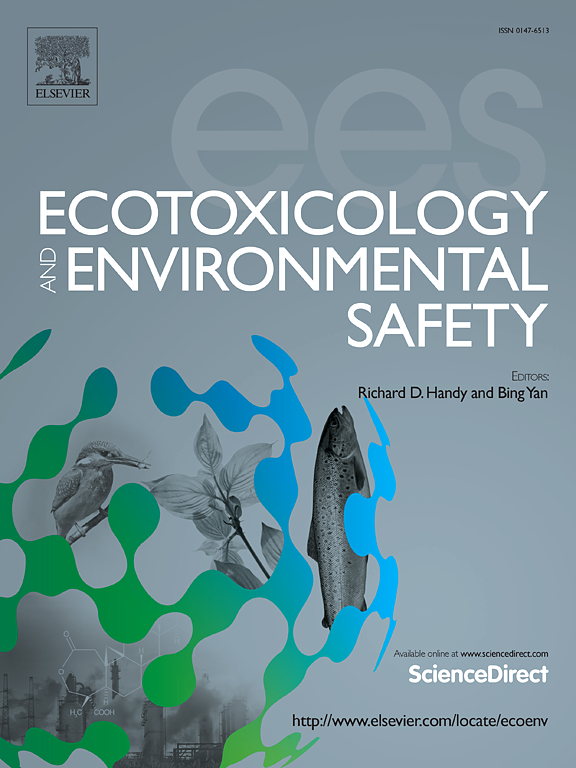Short-term subacute di(2-ethylhexyl) phthalate exposure disrupts gut microbiota, metabolome, liver transcriptome, immunity, and induces liver injury in rats
IF 6.2
2区 环境科学与生态学
Q1 ENVIRONMENTAL SCIENCES
引用次数: 0
Abstract
Di(2-ethylhexyl) phthalate (DEHP) is recognised as a pollutant with multiple health risks. In this study, multi-omics approaches were used to examine the alterations in immunity, gut microbiota and metabolome, and liver transcriptome in the rats with DEHP-induced subacute liver injury. Following short-term subacute DEHP exposure, the rats exhibited decreased body weight, increased liver weight, impaired liver function and immunity, and signs of liver injury. DEHP exposure reduced the richness, diversity, and evenness of gut microbiota, resulting in elevated levels of Lactobacillus, Romboutsia, and Alistipes and decreased levels of unclassified Muribaculaceae, Oscillibacter, and Akkermansia in the intestine. Multiple gut metabolic pathways were altered by DEHP, among which sphingolipid metabolism was enriched with the most differentially expressed metabolites. In the liver tissues of rats exposed to DEHP, lipid metabolism-related pathways were altered, including downregulated steroid biosynthesis and upregulated fatty acid degradation. In conclusion, the relevant findings suggest that DEHP can cause immune alteration, gut microbiota dysbiosis, gut metabolome disruption, liver transcriptome dysregulation, and result in liver injury in rats. These results could benefit the clinical diagnosis of DEHP-induced subacute liver injury.
求助全文
约1分钟内获得全文
求助全文
来源期刊
CiteScore
12.10
自引率
5.90%
发文量
1234
审稿时长
88 days
期刊介绍:
Ecotoxicology and Environmental Safety is a multi-disciplinary journal that focuses on understanding the exposure and effects of environmental contamination on organisms including human health. The scope of the journal covers three main themes. The topics within these themes, indicated below, include (but are not limited to) the following: Ecotoxicology、Environmental Chemistry、Environmental Safety etc.

 求助内容:
求助内容: 应助结果提醒方式:
应助结果提醒方式:


